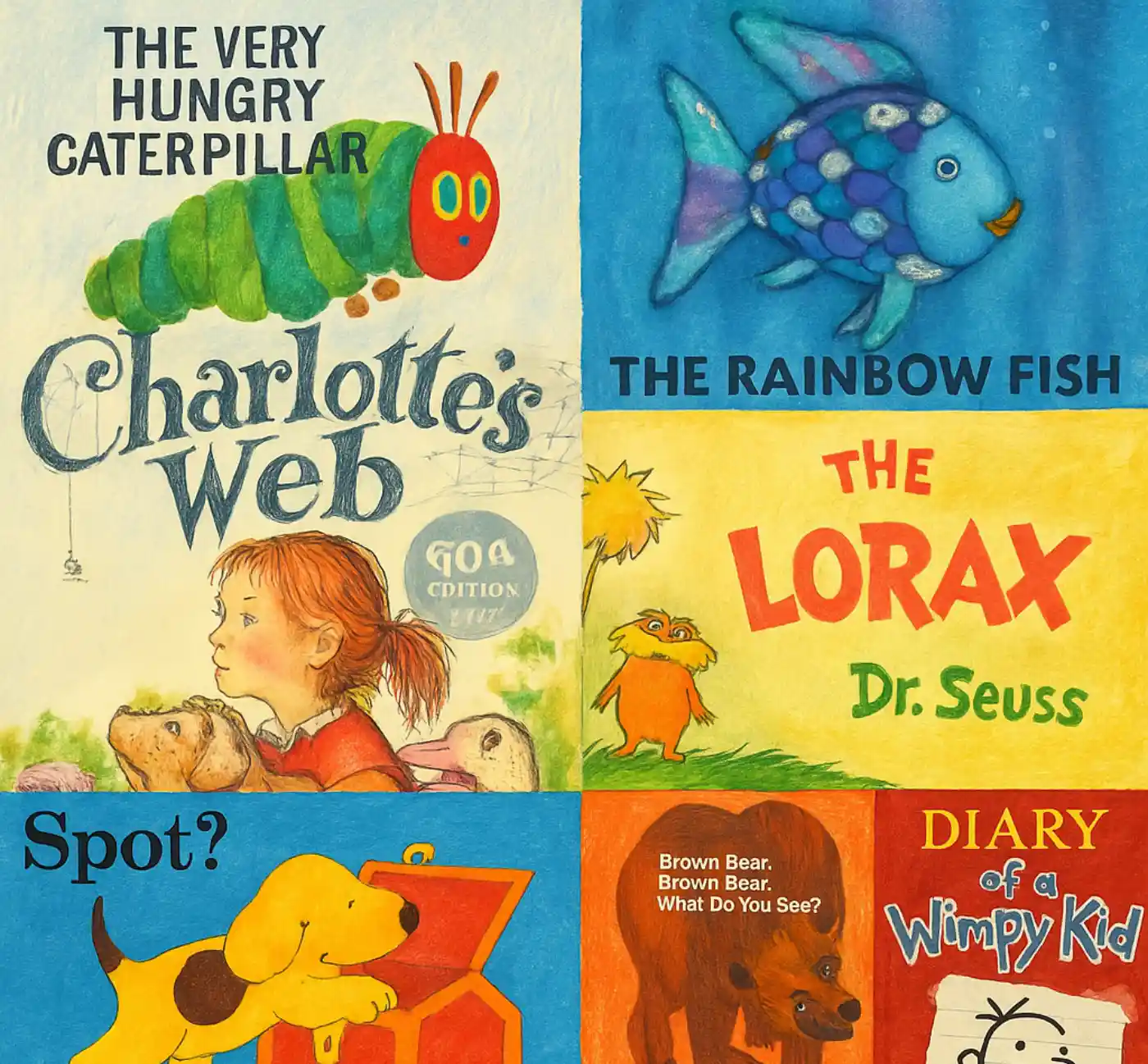How to Choose the Right Book for Your Child’s Age and Reading Level: A Comprehensive Guide for Parents

As parents, one of the most important gifts we can give our children is a love for reading. Books are not just a source of entertainment; they play a critical role in a child’s cognitive, emotional, and social development. But choosing the right book for your child can be overwhelming given the vast number of options available. It’s important to remember that selecting a book isn’t just about age – it’s about matching the child’s developmental stage, interests, and reading ability.
In this guide, we’ll break down how to choose books that align with your child’s age, reading level, and personal interests, and explain why it’s important to do so. With some tips and science-backed advice, you’ll be empowered to make informed decisions that will set your child on the path to a lifelong love of reading.
01. Understanding Developmental Stages and Age-Appropriate Books
When selecting books for your child, it’s essential to consider not only their age but also their developmental stage. Children’s cognitive, emotional, and linguistic abilities develop at different rates, and the right book can support this development. Here’s a breakdown of how to match books to your child’s age and developmental milestones:
Infants (0-2 years):
At this stage, children are just beginning to develop their sense of language and the world around them. Books should be tactile, colorful, and engaging. Board books with simple pictures and rhythmic, repetitive text are ideal for this age group. They may not understand the words, but they will begin to associate the images with the sounds of language.
Book Suggestions:
- Brown Bear, Brown Bear, What Do You See? by Bill Martin Jr. and Eric Carle
- Goodnight Moon by Margaret Wise Brown
Toddlers (2-4 years):
Toddlers are learning to talk, identify objects, and understand basic concepts. Books for this age should feature simple narratives, rhymes, and repetitive language. Lift-the-flap and interactive books can also be a hit, as they engage a child’s curiosity and fine motor skills.
Book Suggestions:
- Where’s Spot? by Eric Hill
- The Very Hungry Caterpillar by Eric Carle
Preschoolers (4-6 years):
At this age, children begin to understand more complex stories and enjoy books with more detailed illustrations. They are also developing their early literacy skills, so easy-to-read books with short sentences and predictable patterns are perfect. Books with simple plots, repetition, and humor help keep them engaged.
Book Suggestions:
- If You Give a Mouse a Cookie by Laura Numeroff
- Green Eggs and Ham by Dr. Seuss

Early Elementary (6-8 years):
By this age, children are becoming more independent readers. They have a growing vocabulary and a better grasp of story structure. Books for this group should feature short chapters, engaging plots, and a mixture of simple and slightly more challenging words. Series books are particularly appealing at this stage because they provide a sense of continuity and help with reading fluency.
Book Suggestions:
- Junie B. Jones series by Barbara Park
- Magic Tree House series by Mary Pope Osborne
Middle Elementary (8-10 years):
Children at this stage can handle more complex plots and characters. They can read longer books with more challenging language, and they may start exploring different genres like fantasy, mystery, and historical fiction. Books that introduce deeper themes, such as friendship and responsibility, are beneficial at this stage.
Book Suggestions:
- Charlotte’s Web by E.B. White
- Percy Jackson & the Olympians series by Rick Riordan
Tweens (10-12 years):
At this age, children are developing critical thinking skills and can handle intricate narratives, multiple storylines, and subtle themes. Books should challenge them but still be engaging. You can begin introducing young adult (YA) fiction, though it’s important to ensure the themes and content are age-appropriate.
Book Suggestions:
- Harry Potter and the Sorcerer’s Stone by J.K. Rowling
- The Chronicles of Narnia by C.S. Lewis
02. Matching Books to Reading Ability
Even within the same age range, children can be at different stages of reading ability. Matching books to your child’s current reading level is crucial to avoid frustration or boredom.
Early Readers (Emergent Readers):
If your child is just starting to read, opt for leveled books designed for emerging readers. These books often feature large fonts, simple words, and engaging illustrations. Look for books with short sentences and high-frequency sight words to build confidence.
Fluent Readers:
Children who can read independently but may need a little extra challenge will benefit from books with more complex vocabulary and sentence structure. Books with chapter divisions and a mix of text and illustrations can help maintain their interest while promoting skill development.
Advanced Readers:
For highly skilled readers, choose books that introduce advanced vocabulary and complex themes. At this stage, children can handle books with fewer pictures and longer passages of text. Encourage them to explore different genres, and consider giving them access to books written for older readers to cultivate a sense of accomplishment.
03. Selecting Books Based on Your Child’s Interests
Children are more likely to engage with reading when the material aligns with their personal interests. Start by exploring the topics that excite your child, whether it’s animals, sports, fantasy, science, or real-world adventures.
Interest-Based Reading
If your child loves dinosaurs, books like National Geographic Little Kids First Big Book of Dinosaurs will capture their attention. If they’re into outer space, consider books like The Darkest Dark by Chris Hadfield.
Personalizing the Book Collection
Pay attention to what your child gravitates toward when choosing toys or watching TV shows. Books that connect to these interests will make reading more enjoyable.
04. Encourage Exploration and Variety
While it’s important to select books that are age-appropriate and match your child’s reading ability, it’s equally important to encourage exploration. Let your child explore different genres, formats (picture books, graphic novels, and non-fiction), and themes. This exposure broadens their understanding of the world, fosters empathy, and improves comprehension.
05. Scientific Benefits of Reading at the Right Level
Research has consistently shown that reading contributes significantly to cognitive development. For example:
Vocabulary Development:
Books that match a child’s ability help expand their vocabulary by introducing new words in context. A study published in Developmental Psychology found that children who read books at their level tend to show stronger vocabulary growth.
Cognitive Skills:
Reading develops critical thinking, problem-solving, and memory skills. According to The Journal of Educational Psychology, children who read regularly perform better in subjects such as math and science due to enhanced cognitive skills.
Emotional and Social Growth:
Age-appropriate books also foster empathy, as they expose children to a wide range of characters and experiences. Books that align with a child’s developmental stage can help them navigate their own emotions.
End Note
Choosing the right book for your child isn’t just about selecting something based on age; it’s about finding a balance between age, reading ability, and interests. By understanding your child’s developmental stage and selecting books that match their reading level, you can foster a love of reading that will last a lifetime. Whether it’s a simple picture book for your toddler or a challenging novel for your preteen, the right book will not only support your child’s literacy development but also their emotional and intellectual growth.




